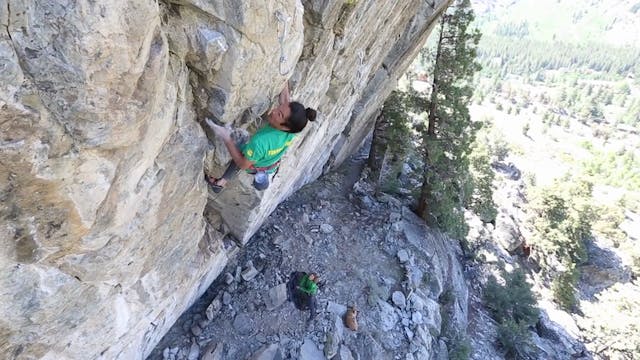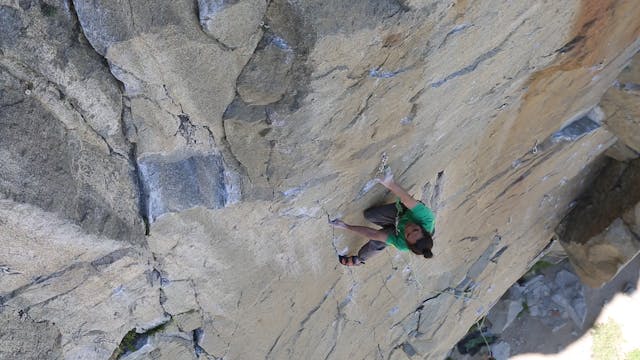Sport Climbing: 4. Crimping Techniques
Sport Climbing
•
2m 11s
In this video we review proper crimping techniques used while sport climbing. As you progress in sport climbing, certain routes will require you to use impossibly small holds. Proper crimping technique is vital to sending your sport climbing project—and to keep your tendons from exploding!
Two main hand positions are used while holding onto small edges: the “open” or “closed” crimp. Knowing which one to use could be the difference between success and failure.
Open-hand crimp - This position is the weapon of choice for most decently sized-edges—and for the health of your digits. Apply as many fingers (or phalanges) on the hold has you can, relax the rest of your hand and thumb. If possible, use the thumb against the rock to gain even more purchase.
Imagine your hand as open, or forming a slight “C” shape. Apply has much pressure as you can on the pads of your fingers. Pull up, push off your toes, and send!
Closed-hand crimp - When holds get very small -- like small incut edges the size of matchsticks or dime edges—the closed hand crimp may be used for even more leverage. For this grip, curl your hand like you’re squeezing a ball. Get the tips of your fingers involved, or even your nails. If possible, wrap the thumb on top of the index finger or push against the side of it for more gripping power. Think of your hand as a hook, or a tiger claw grasping the edge.
In this closed grip, there is much more leverage on your fingers and tendons. As such, injury is very possible. Tune in to how your fingers feel, and don’t work the same crimpy sequence too may times in a row.
Practice both open- and closed-hand crimps to get used to them, and to build up strength gradually in these positions. Soon, both styles will become second nature.
We hope you found this video helpful. Feel free to comment below with questions or thoughts!
Please remember, climbing is inherently dangerous. Climb at your own risk.
Up Next in Sport Climbing
-
Sport Climbing: 5. Dynamic Movement
In this video we review dynamic movement. Dynamic movement, in contrast to static movement, is a very gymnastic way of climbing. It includes the flashy move known as the “dyno”—an explosive way to gain upward movement.
It is often wise to move statically and methodically up the wall, staying ... -
Sport Climbing: 6. Falling While on Lead
In this video we review falling considerations for the lead climber in sport climbing.
Sport climbing presents a unique opportunity for the climber to experience, practice and learn how to fall in a somewhat controlled environment. Bolts may be stronger than some gear placements, and many spor...
-
Sport Climbing: 8. Fixed Draws
In this video we review considerations for using fixed draws when sport climbing.
For elite, difficult, and high-level sport climbing, climbers may choose to fix draws on their projects.
If you walk up to a sport climbing area and see quickdraws hanging on a route, they are probably there...


